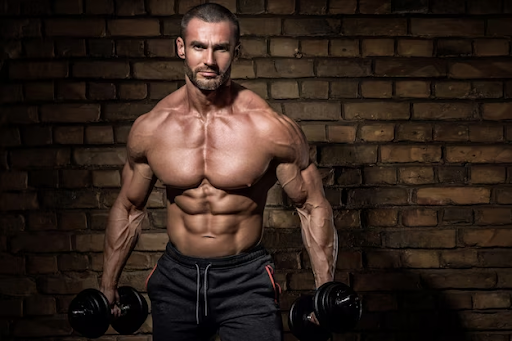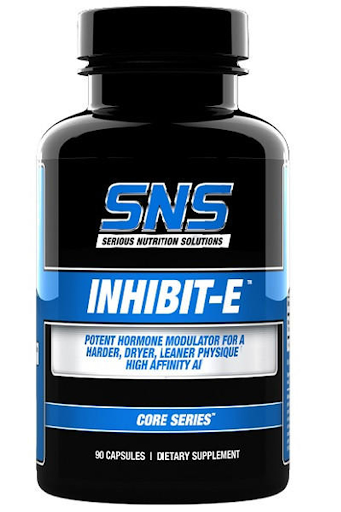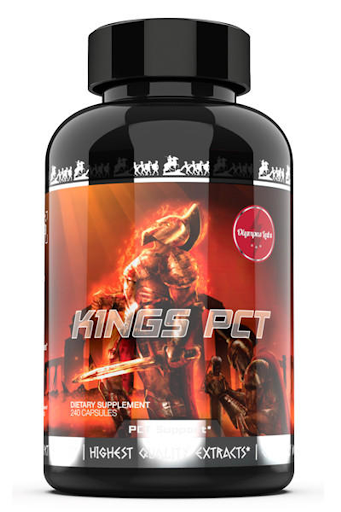
Embarking on a journey to enhance physical performance often involves the use of performance-enhancing substances, and for many athletes and fitness enthusiasts, the post-cycle phase can be a critical and challenging period. The body undergoes significant hormonal changes during and after such cycles, and ensuring a smooth transition back to natural hormonal balance is paramount for overall health and well-being. In this exploration, we delve into the world of post-cycle therapy (PCT) and estrogen blockers, aiming to shed light on their pivotal roles in optimizing the post-cycle recovery journey.
Post-cycle recovery is more than just a bridge between cycles; it is a fundamental aspect of responsible and sustainable performance enhancement. As the body adapts to the changes induced by performance-enhancing substances, the delicate balance of hormones can be disrupted, leading to potential health risks and complications. Therefore, understanding and actively managing the post-cycle phase becomes crucial for athletes and individuals seeking optimal results while safeguarding their long-term health.
Understanding Post-Cycle Recovery
Embarking on a performance-enhancing journey significantly alters the body’s delicate hormonal balance. Understanding the intricate dance of hormones and the impact of performance-enhancing substances is crucial for a seamless transition post-cycle.
Explanation of the Body’s Natural Hormonal Balance
The human body operates like a finely tuned orchestra, with hormones playing the role of conductors orchestrating various physiological processes. Testosterone, a key male sex hormone, and estrogen, its female counterpart, maintain a delicate equilibrium. This balance influences muscle growth, energy levels, and overall well-being.
- Testosterone’s Role: Testosterone is vital for muscle development, bone health, and overall vitality in both men and women. It regulates metabolism, mood, and contributes to a sense of well-being.
- Estrogen’s Significance: Estrogen is not exclusive to females; males also possess it, albeit in smaller quantities. It plays a role in bone density, lipid metabolism, and joint health.
Effects of Performance-Enhancing Substances on Hormonal Levels
Performance-enhancing substances, while providing short-term benefits, can disrupt this delicate hormonal symphony. Anabolics, for instance, introduce synthetic testosterone into the body, signaling the endocrine system to reduce its natural production.
- Testosterone Supplementation: Exogenous testosterone signals the body to reduce its natural production. This disrupts the normal feedback loop between the brain and testes.
- Estrogen Imbalance: Elevated testosterone levels can lead to an increase in estrogen through a process called aromatization, potentially causing side effects like gynecomastia (enlargement of male breast tissue).
Risks and Challenges Associated with Post-Cycle Recovery Without Intervention
Post-cycle, the body is left in a vulnerable state, struggling to regain its natural hormonal balance. Failing to intervene during this period can lead to various risks and challenges.
- Hormonal Imbalance: Without intervention, the body may struggle to restart its natural testosterone production, leading to prolonged hormonal imbalances.
- Muscle Loss and Fatigue: The post-cycle phase might witness a loss of muscle mass and increased fatigue due to inadequate testosterone levels.
- Psychological Effects: Hormonal fluctuations can contribute to mood swings, depression, and a general sense of unwellness.
The Role of Post-Cycle Therapy (PCT)
Post-cycle therapy (PCT) serves as a crucial bridge between the use of performance-enhancing substances and the restoration of the body’s natural hormonal balance. This section outlines the definition, purpose, components, and mechanisms of action underlying an effective PCT regimen.
Definition and Purpose of PCT
Post-cycle therapy refers to a targeted intervention designed to restore hormonal balance following the cessation of performance-enhancing substances. Its primary goal is to kickstart the body’s natural production of hormones, especially testosterone, which might have been suppressed during the performance-enhancing phase.
Components of an Effective PCT Regimen
Selective Estrogen Receptor Modulators (SERMs):
- Definition: SERMs are compounds that selectively bind to estrogen receptors, modulating their activity.
- Purpose: In a PCT regimen, SERMs help counteract the potential increase in estrogen levels by blocking estrogen receptors, preventing adverse effects like gynecomastia.
Human Chorionic Gonadotropin (hCG):
- Definition: hCG is a hormone that mimics luteinizing hormone (LH), which stimulates testosterone production in the testes.
- Purpose: Administering hCG during PCT helps maintain testicular function and promotes the production of endogenous testosterone.
Aromatase Inhibitors (AIs):
- Definition: AIs are substances that inhibit the aromatase enzyme, responsible for converting testosterone into estrogen.
- Purpose: Including AIs in a PCT regimen helps control estrogen levels by reducing the conversion of testosterone, aiding in hormonal balance.
Mechanisms of Action: How PCT Helps Restore Hormonal Balance
SERMs: SERMs bind to estrogen receptors, preventing estrogen from exerting its effects. By doing so, they signal the body to increase the production of gonadotropins, such as LH and follicle-stimulating hormone (FSH), promoting testosterone synthesis.

- hCG: By mimicking LH, hCG stimulates the Leydig cells in the testes to produce testosterone. This helps maintain testicular function and prevents atrophy, a common concern during the post-cycle period.
- AIs: Aromatase inhibitors reduce estrogen levels by blocking the conversion of testosterone into estrogen. This prevents estrogen-related side effects and aids in maintaining an optimal hormonal balance.
Estrogen Blockers and Their Significance
An Estrogen blocker can play a pivotal role in optimizing post-cycle recovery by addressing the challenges associated with elevated estrogen levels. This section provides an overview of estrogen’s role in the body, explores the link between estrogen levels and post-cycle recovery, and delves into the types of estrogen blockers along with their modes of action.
Overview of Estrogen’s Role in the Body
Estrogen is a group of hormones, primarily estradiol, estrone, and estriol, with diverse functions in both males and females. While often associated with female reproductive health, estrogen also plays essential roles in bone density, cardiovascular health, and mood regulation in both genders.
- Female Reproductive Health: Estrogen is crucial for regulating the menstrual cycle, supporting pregnancy, and maintaining reproductive tissues.
- Bone Density: Estrogen contributes to bone health by inhibiting bone resorption, making it vital for both men and women.
- Cardiovascular Health: Estrogen has cardiovascular protective effects, influencing cholesterol levels and supporting healthy blood vessels.
Link Between Estrogen Levels and Post-Cycle Recovery
During post-cycle recovery, the body’s attempt to restore hormonal balance may result in elevated estrogen levels due to the aromatization of excess testosterone. This imbalance can lead to undesirable side effects such as water retention, gynecomastia, and mood disturbances.
- Water Retention: Elevated estrogen levels may contribute to water retention, leading to a bloated appearance.
- Gynecomastia: Increased estrogen can cause the development of breast tissue in males, a condition known as gynecomastia.
- Mood Disturbances: Hormonal imbalances, including elevated estrogen, can impact mood, leading to irritability and emotional fluctuations.
Types of Estrogen Blockers and Their Modes of Action
Aromatase Inhibitors (AIs):
- Mode of Action: AIs block the aromatase enzyme, inhibiting the conversion of testosterone into estrogen. By reducing estrogen production, AIs help prevent estrogen-related side effects during post-cycle recovery.
Selective Estrogen Receptor Modulators (SERMs):
- Mode of Action: SERMs selectively bind to estrogen receptors, modulating their activity. In the context of post-cycle recovery, SERMs help by blocking estrogen receptors, preventing estrogen from exerting its effects. This stimulates the production of gonadotropins, promoting testosterone synthesis.
Understanding the significance of estrogen blockers in post-cycle recovery is integral to managing potential side effects and ensuring a smoother transition to the body’s natural hormonal balance. In the next section, we will explore how individuals can optimize their post-cycle journey by incorporating personalized approaches and adopting lifestyle factors that complement the effectiveness of estrogen blockers and PCT regimens.
Optimizing Your Post-Cycle Journey
Navigating the post-cycle journey with success involves more than the mere application of PCT and estrogen blockers. This section underscores the importance of individualized plans, emphasizes the need for hormonal monitoring, and explores lifestyle factors that synergize with PCT and estrogen blockers to enhance recovery.

The Importance of Individualized PCT and Estrogen Blocker Plans
Recognizing the unique biochemical makeup of individuals is fundamental to crafting effective post-cycle strategies. Generic approaches may not address specific needs, making individualized plans crucial for success.
- Personalized Hormonal Response: Individuals may exhibit distinct hormonal responses to performance-enhancing substances, necessitating tailored PCT and estrogen blocker plans.
- Medical History and Conditions: Individual health histories and pre-existing medical conditions must be considered to mitigate potential risks and optimize recovery.
Monitoring Hormonal Levels During Recovery
Regular monitoring of hormonal levels is paramount to gauge the effectiveness of the post-cycle regimen and make necessary adjustments. This proactive approach ensures a responsive and adaptive recovery process.
- Hormonal Blood Tests: Periodic blood tests measuring testosterone, estrogen, and other relevant hormones provide crucial insights into the body’s response to the post-cycle interventions.
- Adjustments Based on Results: Monitoring allows for timely adjustments to PCT and estrogen blocker dosages, ensuring optimal hormonal balance is achieved without unnecessary complications.
Lifestyle Factors that Complement PCT and Estrogen Blocker Effectiveness
Nutrition and Supplementation:
- Balanced Diet: A well-balanced diet supports overall health and aids in hormonal recovery. Essential nutrients, such as vitamins and minerals, play a role in hormone production.
- Supplementation: Targeted supplementation, including vitamins D and E, omega-3 fatty acids, and zinc, can complement PCT efforts and promote hormonal balance.
Exercise and Rest:
- Structured Training: Incorporating a well-designed exercise routine, including resistance training, helps support muscle growth and overall well-being.
- Adequate Rest: Sufficient sleep and rest periods are crucial for hormone regulation and recovery. Quality rest promotes optimal hormonal secretion.
Stress Management:
- Cortisol Regulation: Chronic stress can elevate cortisol levels, negatively impacting hormonal balance. Stress management techniques such as meditation, yoga, or mindfulness can help regulate cortisol secretion.
- Holistic Approaches: Adopting holistic stress-reduction strategies contributes to a healthier mental state, positively influencing hormonal equilibrium.
Optimizing the post-cycle journey requires a holistic approach. Tailoring PCT and estrogen blocker plans to individual needs, monitoring hormonal levels, and incorporating lifestyle factors ensure a comprehensive and effective recovery process. The final section will delve into potential risks and considerations associated with post-cycle interventions, emphasizing the importance of consulting healthcare professionals for a well-informed and safe recovery journey.
Conclusion:
Embarking on the path of performance enhancement demands a nuanced understanding of the intricate interplay between hormones and the body’s response to performance-enhancing substances. The journey, however, doesn’t conclude with the cessation of these substances; rather, it extends into the critical phase of post-cycle recovery. In this exploration, we’ve delved into the integral roles of post-cycle therapy (PCT) and estrogen blockers, unraveling the mechanisms behind their effectiveness in optimizing the post-cycle recovery journey
In conclusion, the quest for boosting natural recovery after a performance-enhancing cycle involves a multifaceted approach. PCT and estrogen blockers serve as crucial tools, supported by individualized plans and holistic lifestyle choices. The post-cycle journey, when approached with knowledge and care, not only optimizes recovery but also safeguards long-term health and well-being. As individuals navigate this intricate path, consulting healthcare professionals remains paramount for a safe and informed recovery journey.
Interesting Related Article: “Transform Your Exercise Routine with These Advanced Treadmill Workouts“









